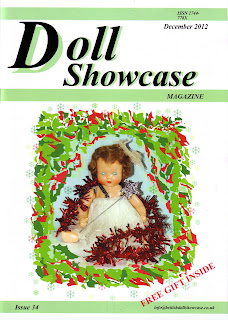MUSINGS FROM THE BOWER 22
I’ve been sorting through piles of old photo albums. Some are mine, with photos of the family taken in the 1980s and 1990s, whilst others belonged to my parents and date back before the Second World War. It’s intriguing to look at these photos – there is my Dad, smart in his army uniform. His regiment was the Royal Welch Fusiliers, and he was involved in both the evacuation of Dunkirk and the D-Day Landings. Luckily, unlike so many others, he came back more-or-less sound – he had an ear injury and an eye problem, but was thankfully still in one piece.
During the War Mum worked at Cable and Wireless, and in some notes of hers that I found recently she said, ‘One day that stands out in my memory was the liberation of our servicemen from Japanese prisoner of war camps. They were allowed to send free telegrams to let their families know they were alive. The families were also allowed to send a free telegram back. Everyone worked feverishly to get the telegrams out. No-one wanted to leave their seat. We were so happy to have the privilege to pass on the news to wives, mothers and sweethearts that their menfolk were safe and would soon be home.’
Dad and Mum did their courting by letter, as he had little leave, and they married in September 1945 in a church which, according Mum’s notes, had been bombed, but there was a small corner which had escaped the damage. There was no music, and the Vicar ‘whispered the words so softly’ that Dad couldn’t hear properly and just guessed at the responses. Mum borrowed a wedding dress from her sister, but because she washed it the lacy fabric went rather limp and so she had to wear a white satin nightdress underneath. Her white satin shoes were bought on Walthamstow market, and she didn’t have many clothing coupons, so ended up buying a ‘going away’ suit with a velvet collar on the black market. They were able to have a wedding cake with ‘proper’ icing rather than the cardboard that many wartime brides had to make do with, because she had an egg. Apparently, she optimistically invited fifty guests, but goodness knows what the wedding breakfast was like, given the meagre rations at the time.
 |
| Me as a baby with my grandmother who lived opposite us |
 |
| Me as a toddler outside our house |
Mum and Dad moved to a flat in an old house in Brixton, and I was born a couple of years after. It felt a safe, comforting place for me. My grandparents lived opposite, an aunt, uncle and cousins were in the same street, and another aunt, uncle and my other grandfather lived near, so I always had someone to visit and to care for me. Many of the photos in the albums depict London in the 1950s – my Dad was an enthusiastic amateur photographer, and each weekend we would visit the zoo, or walk along the embankment or go to one of the parks or museums. We lived there until the mid-1950s when we moved to a brand new house in Hertfordshire. I’ve set myself the task of scanning in some of these photos but it will be a long job. Luckily, because I looked at the pictures over and over as a young child, in most cases I have remembered the identity of the people shown in them – it’s useful, especially, that I can differentiate between baby photos of me, several cousins and children of family friends, so I will be able to label them up correctly.
Changing the subject – it won’t be long before Christmas is upon us, and a few days ago I had my first Christmas dinner of the year! I publish my own doll magazine, called Doll Showcase, and Warners, of Bourne, Lincolnshire, print it for me. After we collected the Christmas issue, we went to Waterside Garden Centre nearby, as we had decided to have lunch out. When we arrived they were serving their Christmas meals, and so we had turkey and all the trimmings followed by a delicious cherry-topped meringue. That was an unexpected treat – we thought we would be getting something more mundane, such as ham, egg and chips. So, I suppose I should think about Christmas shopping. As usual, I leave it all to the last minute, then panic!






